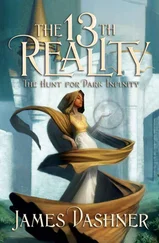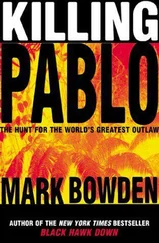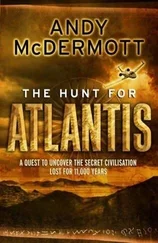In Wilma’s home the scenes-of-crime officers amassed a large number of fingerprints. A fragment of fingerprint on a door jamb was never eliminated. A purse missing from her handbag was never found. To help jog the memory of potential witnesses, a woman police officer dressed up in Wilma’s clothes and a photograph of Wilma’s face was superimposed. Two thousand posters were distributed to shops and other businesses, but little hard information was produced. There was little to distinguish this case from many other unsolved murders. According to Professor Gee: ‘We simply had an unsolved murder in which the only slightly unusual feature was the use of two weapons to cause the injuries.’
Eight weeks and five days after Wilma McCann was murdered, Dennis Hoban was once more summoned from home before breakfast to the scene of the homicide of a woman. Soon, because of the nature of the injuries and the circumstances in which she died, he became firmly convinced that the man who murdered McCann had killed again. Newspapers began talking about a Jack-the-Ripper style killer on the loose.
There had been a false alarm only a few weeks previously at a ghastly murder scene which Hoban attended in Leeds after a ‘photographic model’ and her young child had been stabbed to death. The dead mother also turned out to be a prostitute and Hoban briefly suspected a link. However, this double homicide was almost immediately detected by a combination of good luck and alert thinking by one of Hoban’s former protégés on the No. 3 Regional Crime Squad. A mentally deranged seventeen-year-old youth called Mark Rowntree was quickly arrested by Detective Chief Inspector Dick Holland, stationed at Bradford CID. When the burly rugby-playing detective investigated the killing of a young man, aged sixteen, in nearby Keighley, he came away with a confession from Rowntree that included two other homicides he hadn’t even known had happened. The deaths of the woman and her son in Leeds were barely a few days old and Hoban, who hated bureaucratic paperwork at the best of times, had delayed circulating full details to surrounding divisions. Rowntree confessed to Holland his guilt in a one-man killing spree which included the sixteen-year-old youth, the prostitute and her son, and an eighty-five-year-old widow. He was eventually sent to Broadmoor.
Now, on Wednesday, 21 January 1976, in response to a control room telephone message, Hoban donned a warm, dark brown car coat and his familiar hat and made his way to a derelict area destined for redevelopment. Part of the Manor Street Industrial Estate off Roundhay Road included a row of boarded-up, dilapidated, red-brick buildings, scheduled for demolition. A uniformed inspector took him to an alley between two derelict houses adjacent to a cobblestoned cul-de-sac, Enfield Terrace. The passageway had been roofed over at some point, but the roofing had caught fire and been destroyed. Now the only parts remaining were charred timbers and the passageway was open to the sky. The front of the passage was open but the back was completely filled by masses of rubbish, burnt wood, scrap metal and junked office and factory furniture. The inspector told Hoban that at 8 a.m. a man on his way to work parked his car at the far end of the cul-de-sac almost opposite the passageway. When he got out of the driver’s door, he glanced to the right and saw a pair of legs lying among the rubble about fifteen feet inside the alley. At first he thought it was a shop-window dummy, then realized it was the body of a woman.
Treading carefully, Hoban noticed there were clear drag marks of disturbed earth from the front of the road, along the passageway, to where the body lay on its back. There were also small areas of dried blood on the surface of the cobbles and concrete on the ground. There is never a pleasant place to be brutally murdered, but this was a terrible location in which to die. The first police officer at the scene had earlier noted a boot impression in the roadway, near the entrance to the passageway, and pointed it out to Hoban.
A gale was blowing as the police surgeon, who had been waiting patiently for Hoban to arrive, pulled back a plastic sheet partly covering the body of a middle-aged woman. It had protected the corpse from the wind and rain. The body lay sprawled on its back just outside a doorway, a striped dress pulled up above the waist. The woman’s fawn-coloured imitation leather handbag lay several feet from her head, its flap open. Its contents showed her name was probably Emily Jackson, and that she lived near Morley, a town in the west of Leeds. The brown-haired woman had hazel-coloured eyes and nicotine-stained fingers on both hands, more pronounced on the right than the left. She wore a wedding ring.
Mrs Jackson still had on her red, blue and green checked overcoat and was sprawled on the right of the passage, just in front of the piles of rubbish, with the left arm by her side and the left leg stretched out straight. The right arm was directed out at right angles from the body, and the right leg was bent upwards and outwards, flexed at the knee and hip. The lower limbs were clad in tights, which were laddered and bore a large hole six inches above the knee. She also wore black panties, which were in position, though the left side of the upper edge of the tights was slightly displaced downwards, exposing the knickers. The feet were bare. One cheap-looking white sling-back lay on the ground beside the right foot; the other was a short distance away, closer to the right-hand wall. There was a muddy footprint on her thigh similar to the one in the soil at the entrance to the alley. The front of the body was soiled by dirt in various areas, especially the front and outer sides of the thighs. The face was heavily soiled with mud and blood, and there was bloodstaining on the front of the dress, on the right arm and right hand. The ground beneath and above the head was soiled by small pools and trickles of coagulated blood.
Professor Gee arrived at 9.30 a.m. to be followed soon after by Outtridge from the Home Office laboratory at Harrogate. Examining the spot where the woman lay, the pathologist bent down. The exposed part of the body felt cold to Gee’s touch. Hoban then took him to the front of the passageway, to the cobbled roadway, opposite a flat-roofed modern factory building, the premises of Hollingworth & Moss, bookbinders. Two duckboards had been placed either side of a large piece of hardboard that shielded some vital evidence from the elements. When the hardboard was lifted Hoban and Gee saw a pool of red-stained rainwater – diluted blood. The woman had been struck, probably at this spot, then dragged up the passageway. A chill wind blew strongly and there were intermittent squalls of cold rain. Gee and Hoban quickly agreed that preserving any evidence in these conditions was going to be difficult – particularly contact trace-evidence, which might have been passed from the killer to the victim in the shape of minute fibres of clothing. Gee was reluctant to record the body’s temperature, since this would have involved displacing the victim’s clothing. Instead he instructed that the body be enveloped in large plastic sheets and taken to the public mortuary for a more intensive examination.
Task force officers had begun an inch-by-inch fingertip search among the cobblestones along Elmfield Terrace. Ten officers in overalls, some wearing gloves, got down on their hands and knees in the wind and rain and painstakingly grubbed their way along the street. Among them was a twenty-four-year-old Bradford constable, Andrew Laptew. He had joined the Bradford force after sailing the seven seas as a trainee Merchant Navy officer. After experiencing the delights of South America, the Far East and Australia, he made a determined bid to become a police officer. Joining the Task Force had been an exciting moment, since its members regarded themselves as part of an élite unit. ‘Fingertip searches were back-breaking work because that is what we did – felt with our fingertips to see if we could find any clues,’ he remembered twenty-five years later. They found nothing to help the investigation.
Читать дальше












